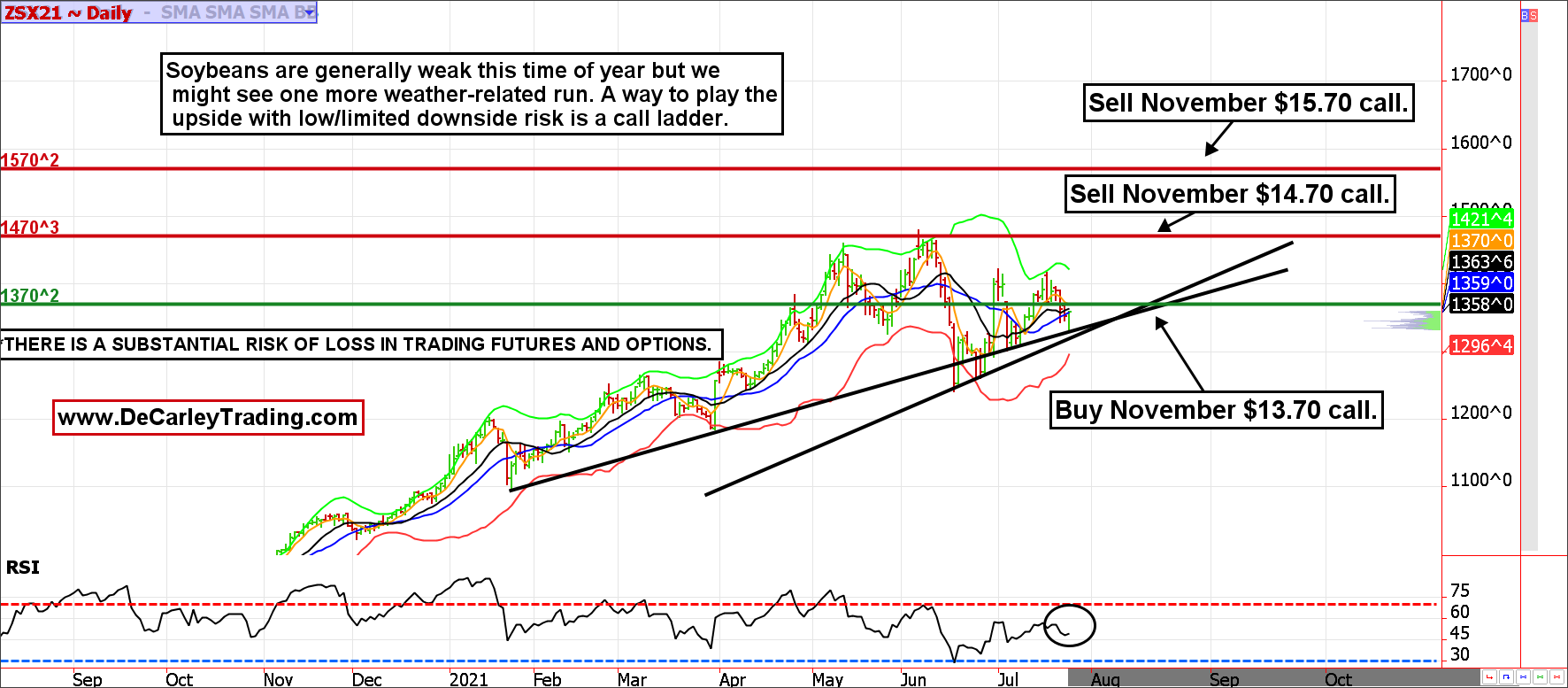It feels as though we have seen the worst of grain market volatility for the summer, but the options still have enough implied volatility to create attractive risk/reward prospects, says Carley Garner of DeCarleyTrading.com.
Although seasonals suggest the path of least resistance will be lower, the grains have mostly ignored their tendencies this year. Also, the trade will be dictated by weather in the coming weeks. With these things in mind, we like the idea of a bullish call ladder enabling traders to get long the market without much downside risk. Call ladders are the practice of purchasing a near-the-money call option, then selling two out-of-the-money call options with different strike prices to finance the trade.
Another way to look at this strategy is it is a simple vertical call spread with an extra short call option to collect the additional premium. Or, it is a modified one-by-two ratio spread (ratio spreads typically involve one long option and two short options with the same strike, but a ladder spread uses staggered short option strike prices). Any way you look at it, the goal is to get into the market with little out-of-pocket expense and limited downside risk exposure. Of course, any time a trade involves more short options than long options, there is theoretically unlimited risk involved; a call ladder trader is accepting unlimited risk at a distant level above the market in exchange for having limited risk below the market.

Here is an example of such a strategy using today’s prices:
Buy 1 November soybean 13.70 call
Sell 1 November soybean 14.70 call
Sell 1 November soybean 15.70 call
Total Cost = circa 0.14 ($700)
These options expire on October 22nd, 86 DTE.
Margin = $2,500**
**Risk = Theoretically unlimited over $16.70 (like being short a futures contract). Below 13.70 the spread expires worthless to net a loss of $700 plus transaction costs. **
**Maximum Profit = $4,300 minus transaction costs (if held to expiration and soybeans are between 14.70 and 15.70.**
If you aren't comfortable with unlimited risk above $16.70, you can simply buy the $15.70 call outright for about 15.5 cents or $775. The market has to move further for this to pay off, but there will be less stress.
In summary, traders wishing to establish bullish positions in the soybean market in anticipation of another rally on weather and yield concerns, should do so in a manner that is mindful of bearish seasonality and downside risk.
Carley Garner is the senior strategist for DeCarley Trading, a division of Zaner, where she also works as a broker. She authors widely distributed e-newsletters; for your free subscription visit DeCarleyTrading.com. She has written four books, the latest is titled Higher Probability Commodity Trading (July 2016).

















